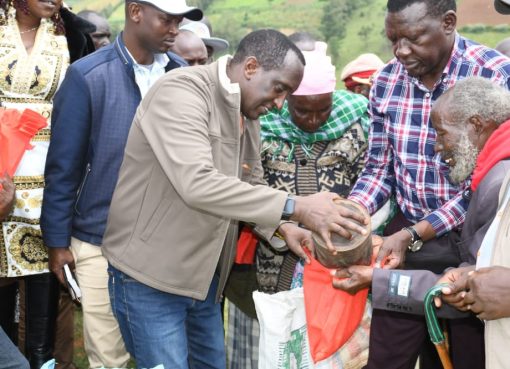Kenya earned over Sh140 billion from the export of horticulture products in 2022, with flowers alone raking in over Sh100 billion.
Agriculture, Livestock, and Fisheries Cabinet Secretary (CS) Franklin Mithika Linturi has attributed this good performance to good policies put in place by the government and subsidies, which have attracted many players to join the sector.
These earnings represent an increase from the Sh110 billion earned by the country from the sector during the previous year.
To this end, Linturi said the government will continue to offer incentives to farmers in the form of extension services and subsidies in order to ensure increased production.
He said the government was looking at how the Eldoret airport can be used more to export fresh produce from the country while also using the Mombasa port to export cut flowers.
Speaking during the opening of this year’s edition of the Naivasha Horticulture Trade Fair, the CS said the government is fully committed to supporting the horticulture sector in the country, considering that it’s one of the country’s top foreign export earners.
Linturi added that the ministry, through the one government policy approach, acknowledged the delay in remittance Value Added Tax (VAT) refunds owed to farmers, noting that the issue will be solved on a case-by-case basis as tax matters are individualised.
As of August this year, the government owed flower farmers Sh12 billion in VAT tax refunds, with the CS assuring farmers that the Kenya Revenue Authority (KRA) will unlock the stalemate.
The horticulture sub-sector, which includes vegetables, flowers, fruits, and medicinal aromatic plants, is among the key sectors of agriculture in Kenya, contributing to foreign exchange, household incomes, and food and nutrition security.
It employs about 6.5 million Kenyans, both directly and indirectly.
The floriculture sector alone directly impacts the livelihoods of over two million Kenyans and has employed over 200,000 people directly.
Production is centred on the Great Rift Valley in Lake Naivasha, Mount Kenya, and Nairobi, among other areas of the country.
The total area under horticulture is estimated at 496,062 hectares, with a production of 7.9 million metric tonnes. Roses account for the largest share of flower exports.
Linturi has also pledged that the government will continue to work with the agro-chemical industries and regulators to ensure that chemicals used on Kenyan farms are safe.
It’s worth noting that there are reports that have appeared in some sections of the media recently indicating that many chemicals used to grow food in Kenya are dangerous and have made lots of agricultural produce, such as vegetables, unfit for human consumption.
The CS also noted that the government will, from January next year, roll out a programme to offer subsidised semen to livestock farmers to boost the breeding of heifers in a bid to meet the growing demand for beef in the export market.
He also announced that the government was in the process of registering farmers for the fertiliser subsidy to be used this short rain season. “We want to have a solid database of our farmers in order to serve them better,” Linturi said.
According to data from the Ministry of Agriculture, the government delivered two million 50-kilogramme bags of fertiliser to farmers during the long rainy planting season.
More than five million farmers have so far been registered, and some 3.7 million e-vouchers have been issued to enable them to buy the subsidised fertiliser from the National Cereals and Produce Board (NCPB) depots around the country.
By Mabel Keya–Shikuku





